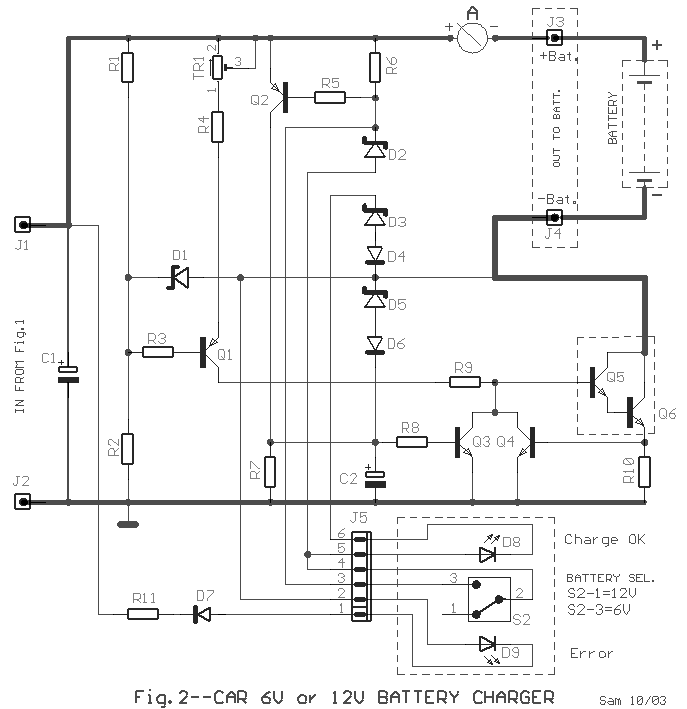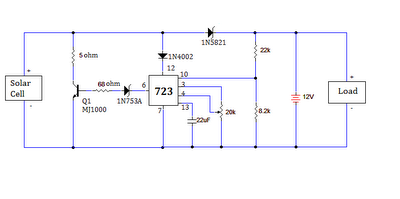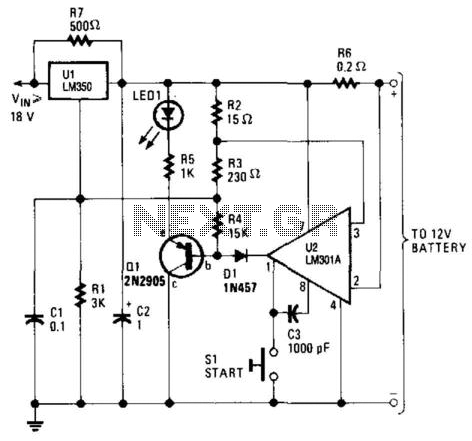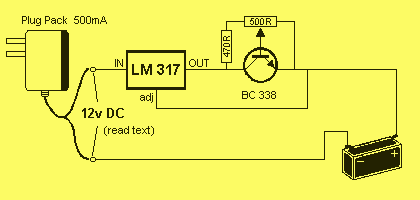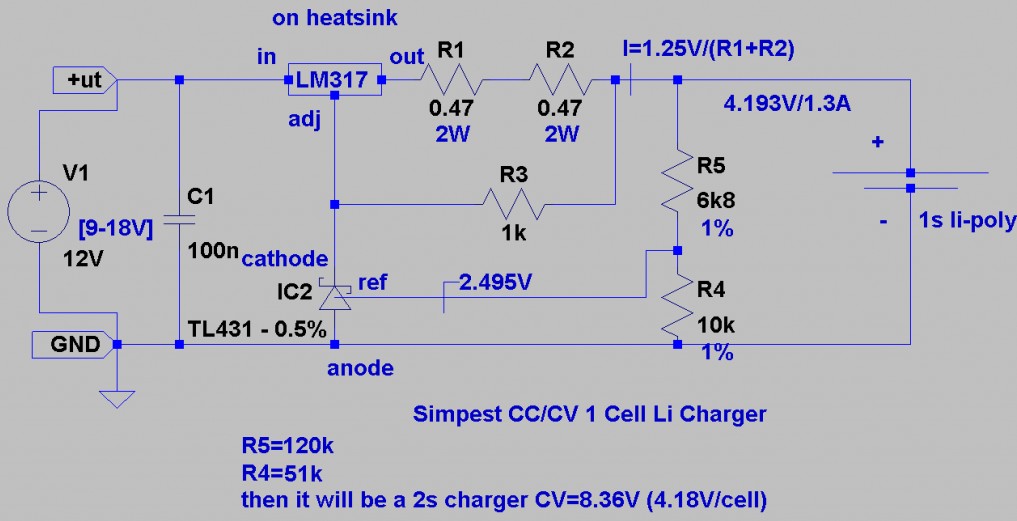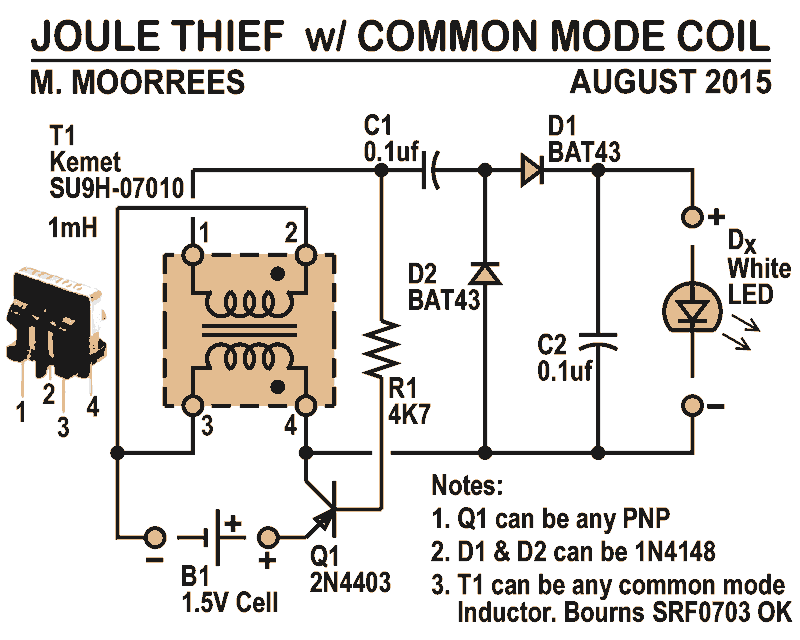
Joule Thief Charger
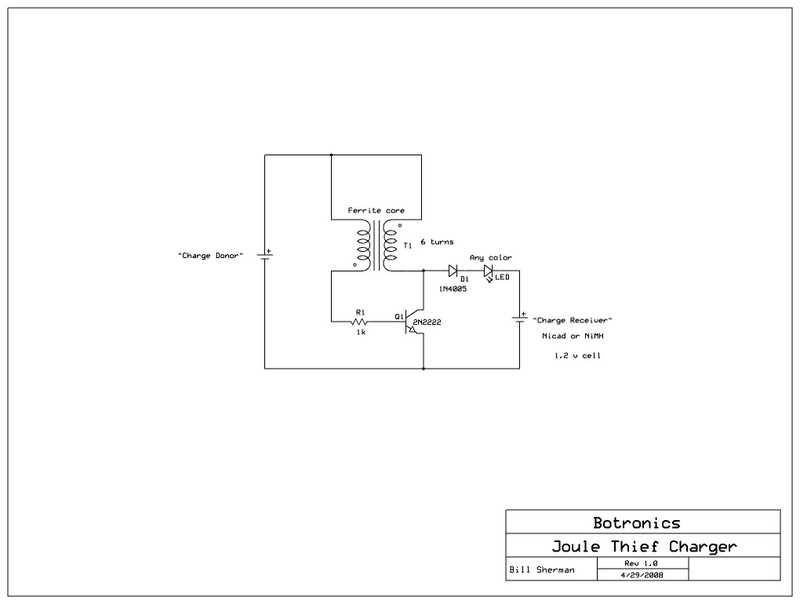
Allow a dead battery to energize another! An open circuit Joule Thief can generate 50 volts or more, sufficient to charge a AA or AAA NiCad or NiMH rechargeable battery.
The Joule Thief is a minimalist circuit designed to extract usable energy from batteries that are considered dead or have a low voltage. It operates on the principle of boosting the voltage from a low-voltage source to a higher voltage, enabling the charging of rechargeable batteries such as NiCad or NiMH types.
The core components of a Joule Thief circuit typically include a transistor, a resistor, a toroidal inductor (or transformer), and a diode. The transistor acts as a switch that controls the flow of current through the inductor. When the circuit is powered by a low-voltage battery, the transistor turns on, allowing current to flow through the inductor. This current builds up a magnetic field around the inductor. Once the magnetic field reaches a certain threshold, the transistor turns off, causing the magnetic field to collapse rapidly. This rapid collapse induces a high voltage in the inductor, which can be rectified by the diode and used to charge another battery.
The design can be adjusted by varying the resistor value, which influences the switching frequency and the efficiency of energy transfer. The circuit is particularly useful for recycling energy from batteries that have dropped below their nominal voltage but still retain some charge.
In practical applications, a Joule Thief can be utilized to charge smaller batteries, making it an efficient solution for powering low-energy devices. It is a simple yet effective circuit that showcases the principles of energy conversion and can be a valuable tool in sustainable electronics.Let your dead battery give life to another! An open circuit Joule Thief can put out 50 or more volts. Enough to charge a AA or AAA Nicad or NiMH rec.. 🔗 External reference
The Joule Thief is a minimalist circuit designed to extract usable energy from batteries that are considered dead or have a low voltage. It operates on the principle of boosting the voltage from a low-voltage source to a higher voltage, enabling the charging of rechargeable batteries such as NiCad or NiMH types.
The core components of a Joule Thief circuit typically include a transistor, a resistor, a toroidal inductor (or transformer), and a diode. The transistor acts as a switch that controls the flow of current through the inductor. When the circuit is powered by a low-voltage battery, the transistor turns on, allowing current to flow through the inductor. This current builds up a magnetic field around the inductor. Once the magnetic field reaches a certain threshold, the transistor turns off, causing the magnetic field to collapse rapidly. This rapid collapse induces a high voltage in the inductor, which can be rectified by the diode and used to charge another battery.
The design can be adjusted by varying the resistor value, which influences the switching frequency and the efficiency of energy transfer. The circuit is particularly useful for recycling energy from batteries that have dropped below their nominal voltage but still retain some charge.
In practical applications, a Joule Thief can be utilized to charge smaller batteries, making it an efficient solution for powering low-energy devices. It is a simple yet effective circuit that showcases the principles of energy conversion and can be a valuable tool in sustainable electronics.Let your dead battery give life to another! An open circuit Joule Thief can put out 50 or more volts. Enough to charge a AA or AAA Nicad or NiMH rec.. 🔗 External reference
